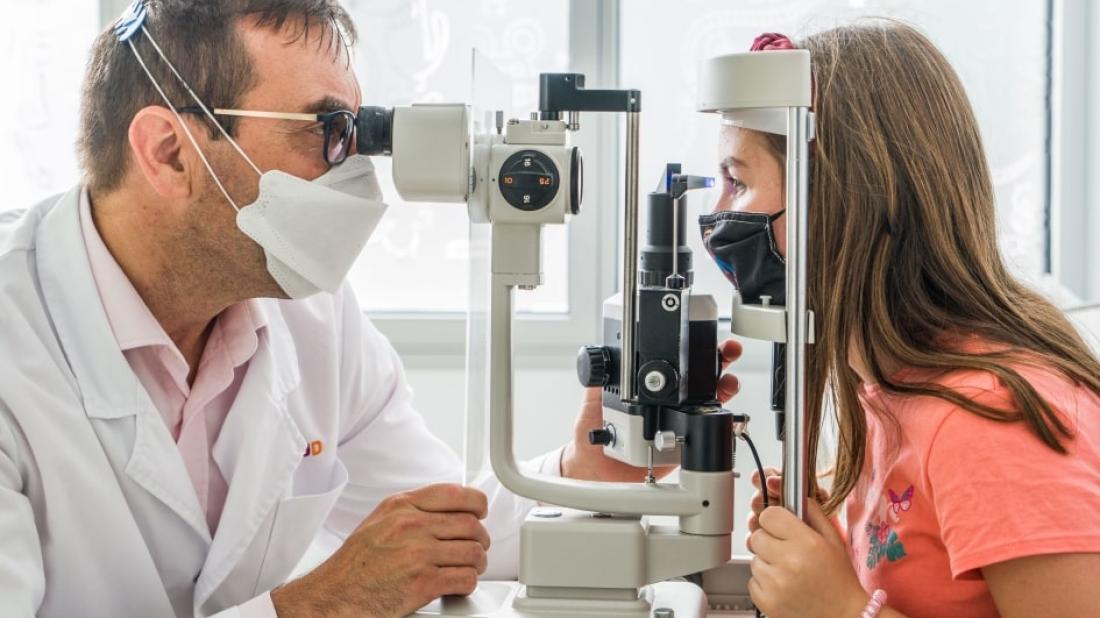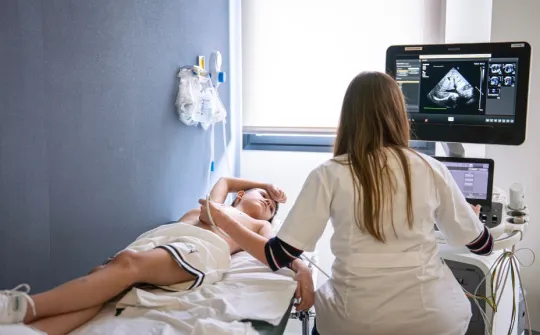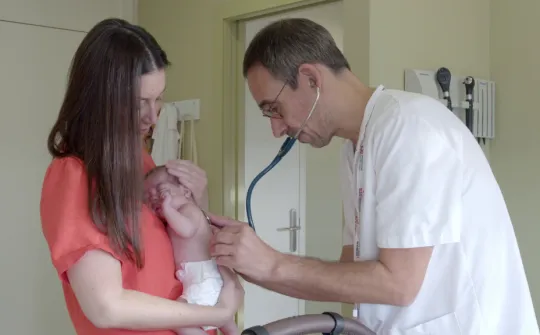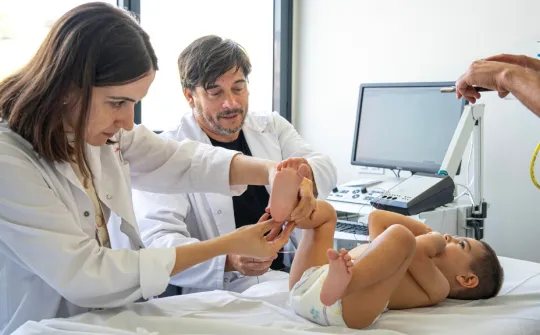
The SJD-Hospital Bellvitge Hereditary Retinal Dystrophy Unit has applied Novartis' Luxturna therapy to Noa, who only retained 3% of her vision
For the first time in Spain, a team of professionals from SJD Barcelona Children’s Hospital has used Luxturna gene therapy from the company Novartis to treat a 12-year-old girl born with an inherited retinal dystrophy that threatened to leave her completely blind.
Before receiving treatment, the girl, who was born with very little vision, had gradually lost her eyesight until she only retained 3%. Administration of the treatment has slowed the progression of the disease, improving her central vision by up to 10% and, especially, her peripheral vision (for example, her ability to walk in dark and low-light conditions).
Until now, no treatment was available for this disease and sufferers ended up completely losing their sight. Now, Noa no longer needs to read Braille because she can read texts in a 16-point typeface. She can also move safely in dimly lit environments.
The therapy she received contains the active substance voretigen neparvovec, which acts on the RPE65 gene, one of the mutated genes in some hereditary retinal dystrophies. This gene is responsible for encoding a protein that helps convert the light that enters the eye into electrical signals that are transmitted to the brain, where they create the images we see. When the RPE65 gene has a pathogenic mutation, the protein does not function properly and the visual cycle is disrupted.
The RPE65 gene is only involved in two conditions that are part of the group of inherited retinal dystrophies: congenital Leber amaurosis and retinitis pigmentosa. Luxturna gene therapy is only indicated for retinal dystrophies secondary to mutations in the RPE65 gene.
Moreover, for Luxterna gene therapy to be effective, the patient must have this mutation in both the paternal and maternal copies of the gene, and the patient must retain functional retinal cells at the time of treatment (i.e., they must still be able to see). The age of onset of the condition varies, ranging from childhood to young adulthood.
What is Luxturna therapy?
Luxterna gene therapy involves genetically modifying a non-pathological virus to introduce a functional copy of the RPE65 gene. Once it is injected into the patient's eye, this gene replaces the mutated gene, accessing the retinal cells that are still alive, where it encodes the healthy RPE65 protein and reactivates the cycle of vision.
The genetically modified virus is administered to the patient by an injection under the retina of the eye. The surgery, which lasts about 45 minutes, is done first on one eye before being repeated one week later on the other eye.
Due to the complexity of the intervention and the high-precision technique it requires, the medical team that treated Noa first practised the technique on an artificial eye using all the equipment involved. This practice run has been incorporated into the Novartis catalogue of good practice.
Luxturna is the only gene therapy authorised for hereditary retinal dystrophies. The ophthalmologist who treated Noa, Jaume Català, from the Ophthalmology Department of the SJD Barcelona Children's Hospital, emphasises the importance of this innovation, as it “gives hope and opens the door to similar therapies to be discovered in the future for the treatment of other retinal dystrophies in which genes are involved. More than 250 genes involved in retinal dystrophies have been described”.
Hereditary retinal dystrophy unit of SJD Barcelona Children’s - Bellvitge University Hospital
SJD Barcelona Children’s Hospital is a reference centre for the treatment of hereditary retinal dystrophies. Together with Bellvitge University Hospital and the Es Retina association, the first unit specialised in the care of this disease in children and adults has been created in Catalonia.
It currently monitors about 1,000 patients in Catalonia and the rest of Spain. The unit is organizing a care network for patients with hereditary retinal dystrophies, progressively incorporating hospitals in Catalonia and the rest of Spain in order to improve the diagnosis, follow-up and treatment of these patients.



